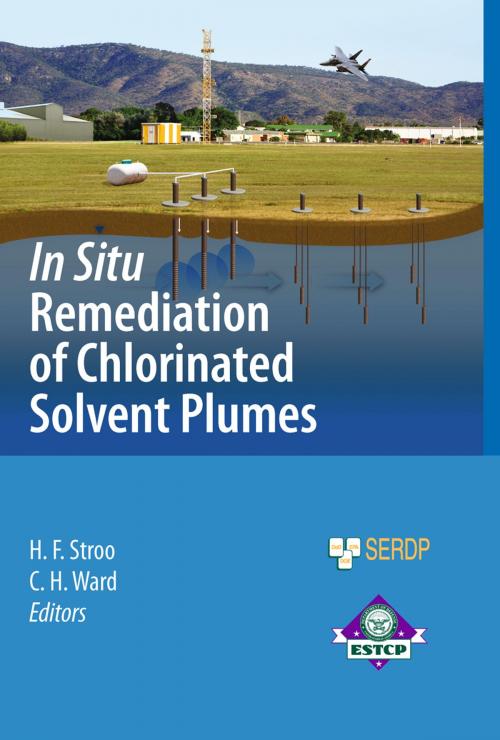In Situ Remediation of Chlorinated Solvent Plumes
Nonfiction, Science & Nature, Technology, Environmental, Science, Biological Sciences, Environmental Science, Nature| Author: | ISBN: | 9781441914019 | |
| Publisher: | Springer New York | Publication: | September 10, 2010 |
| Imprint: | Springer | Language: | English |
| Author: | |
| ISBN: | 9781441914019 |
| Publisher: | Springer New York |
| Publication: | September 10, 2010 |
| Imprint: | Springer |
| Language: | English |
In the late 1970s and early 1980s, our nation began to grapple with the legacy of past disposal practices for toxic chemicals. With the passage in 1980 of the Comprehensive Envir- mental Response, Compensation, and Liability Act (CERCLA), commonly known as Sup- fund, it became the law of the land to remediate these sites. The U. S. Department of Defense (DoD), the nation’s largest industrial organization, also recognized that it too had a legacy of contaminated sites. Historic operations at Army, Navy, Air Force, and Marine Corps facilities, ranges, manufacturing sites, shipyards, and depots had resulted in widespread contamination of soil, groundwater, and sediment. While Superfund began in 1980 to focus on remediation of heavily contaminated sites largely abandoned or neglected by the private sector, the DoD had already initiated its Installation Restoration Program in the mid-1970s. In 1984, the DoD began the Defense Environmental Restoration Program (DERP) for contaminated site assessment and remediation. Two years later, the U. S. Congress codified the DERP and directed the Secretary of Defense to carry out a concurrent program of research, development, and demonstration of innovative remediation technologies. As chronicled in the 1994 National Research Council report, “Ranking Hazardous-Waste Sites for Remedial Action,” our early estimates on the cost and suitability of existing techn- ogies for cleaning up contaminated sites were wildly optimistic. Original estimates, in 1980, projected an average Superfund cleanup cost of a mere $3.
In the late 1970s and early 1980s, our nation began to grapple with the legacy of past disposal practices for toxic chemicals. With the passage in 1980 of the Comprehensive Envir- mental Response, Compensation, and Liability Act (CERCLA), commonly known as Sup- fund, it became the law of the land to remediate these sites. The U. S. Department of Defense (DoD), the nation’s largest industrial organization, also recognized that it too had a legacy of contaminated sites. Historic operations at Army, Navy, Air Force, and Marine Corps facilities, ranges, manufacturing sites, shipyards, and depots had resulted in widespread contamination of soil, groundwater, and sediment. While Superfund began in 1980 to focus on remediation of heavily contaminated sites largely abandoned or neglected by the private sector, the DoD had already initiated its Installation Restoration Program in the mid-1970s. In 1984, the DoD began the Defense Environmental Restoration Program (DERP) for contaminated site assessment and remediation. Two years later, the U. S. Congress codified the DERP and directed the Secretary of Defense to carry out a concurrent program of research, development, and demonstration of innovative remediation technologies. As chronicled in the 1994 National Research Council report, “Ranking Hazardous-Waste Sites for Remedial Action,” our early estimates on the cost and suitability of existing techn- ogies for cleaning up contaminated sites were wildly optimistic. Original estimates, in 1980, projected an average Superfund cleanup cost of a mere $3.















